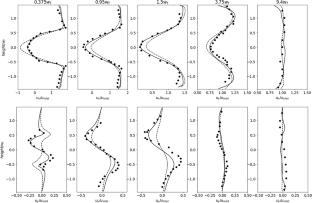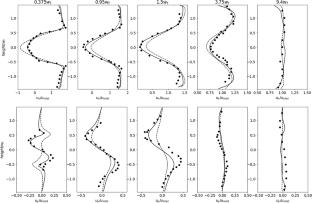An Extension to the Grid-Induced Machine Learning CFD Framework for Turbulent Flows
Abstract
High-fidelity computational fluid dynamics (CFD) is widely used to understand turbulence and guide engineering design. While effective in predicting complex flow phenomena, CFD simulations at high Reynolds numbers require fine grids, resulting in prohibitive computational costs for parametric studies. To address this, we proposed a framework that uses machine learning (ML) to predict fine-grid results from coarse-grid simulations in a previous work. Coarsening the grid increases grid-induced error and affects turbulence prediction, necessitating a data-driven surrogate model to predict and correct these errors. A Random Forest (RF) regression was used to construct the surrogate model. The proposed framework was tested using a turbulent flow configuration consisting of an enclosed duct with a triangular bluff body acting as a blockage to the incoming flow. The chosen input features (IFs) were shown to be critical in predicting the turbulent flow field. In the current paper, we introduce further enhancements to the framework to allow it to be more robust in its prediction and application. These extensions also serve to reduce the computational cost of the approach without compromising on the accuracy. The proposed extensions include (i) adoption of Multivariate Random Forest (MRF) to replace the RF approach; (ii) identification and reduction of the IFs required for training and prediction using Variable IMportance Prediction (VIMP); (iii) predictions of flow field with changes in the bluff body configurations. The present paper aims to investigate the capability of the proposed extensions within the framework. We show that (i) the MRF allows for the accurate prediction of multiple outputs within one training instance but with a reduced computational cost relative to the RF approach. (ii) the impact of the IFs on the training can be understood via VIMP, and applying the MRF model with reduced IFs selected through VIMP does not cause any detriment to the accuracy of the prediction (iii) the extended framework trained with different bluff body configurations could be robustly applied to predict the flow field in an unseen configuration that is different from those trained. The predictive capability of the approach with these proposed extensions is demonstrated.



 求助内容:
求助内容: 应助结果提醒方式:
应助结果提醒方式:


